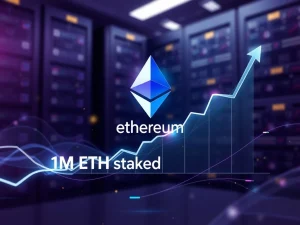Unlock Remarkable Passive Crypto Income with Yield-Bearing Stablecoins in 2025

Are you searching for steady returns in the dynamic world of digital assets? Many investors now eye **passive crypto income** as a viable strategy. Yield-bearing stablecoins represent a significant opportunity for this. These innovative digital tokens promise consistent returns, often mirroring traditional financial products. However, they also introduce unique complexities, including regulatory hurdles, tax implications, and inherent risks. This comprehensive guide will equip you with essential knowledge for navigating yield-bearing stablecoins in 2025.
Understanding Yield-Bearing Stablecoins for **Passive Crypto Income**
Investors have always sought ways to generate passive income. Historically, dividend stocks, real estate, and government bonds filled this role. In 2025, cryptocurrency offers a new contender: yield-bearing stablecoins. These digital assets do more than simply maintain their value against a fiat currency. They are specifically designed to generate a steady income. This income often accrues directly within your digital wallet. Before committing, however, understanding their mechanics, yield generation, and legal frameworks is crucial. Let’s explore these elements in detail.
Traditional stablecoins, such as Tether’s USDt (USDT) or USDC, peg their value to the US dollar. However, they do not inherently pay you for holding them. Yield-bearing stablecoins operate differently. They automatically pass returns from underlying assets or sophisticated strategies to their tokenholders. This mechanism distinguishes them significantly. There are three primary models prevalent today:
- Tokenized Treasuries and Money Market Funds: These stablecoins find backing in safe assets. Short-term US Treasurys or bank deposits often serve as collateral. The yield generated from these holdings is then distributed. This distribution often occurs by increasing the token balance or adjusting the token’s intrinsic value. Essentially, they function as blockchain-wrapped versions of traditional cash-equivalent funds.
- Decentralized Finance (DeFi) Savings Wrappers: Protocols like Sky (formerly MakerDAO) enable users to lock stablecoins. For instance, users can deposit Dai (DAI) into a “savings rate” module. When wrapped into tokens like sDAI, your balance grows over time. The protocol’s governance sets this growth rate.
- Synthetic Yield Models: Some cutting-edge stablecoins utilize derivatives strategies. They generate yield from crypto market funding rates or staking rewards. While returns can be higher, they also fluctuate considerably. Market conditions directly influence these returns.
Can You Truly Earn **Passive Crypto Income**?
Yes, earning passive income with yield-bearing stablecoins is certainly possible. The specific process, however, varies by product. Here is a typical step-by-step journey:
- Choose Your Stablecoin Type: For lower risk and traditional backing, consider tokenized treasury-backed coins. Money-market fund tokens also fall into this category. If you tolerate more DeFi risk, sDAI or similar savings wrappers might appeal. For higher potential yield, synthetic stablecoins like sUSDe could be a fit. However, these come with increased volatility.
- Acquire the Stablecoin: Most tokens are available on centralized exchanges. These platforms typically require Know Your Customer (KYC) verification. Alternatively, you can acquire them directly through a protocol’s website. Issuers often restrict access based on geography. For example, many US retail users cannot purchase tokenized treasury coins. Securities laws often treat these as securities, limiting them to qualified or offshore investors. Minting stablecoins, which involves depositing dollars with an issuer to create new tokens, is also frequently restricted. Many issuers limit minting to banks, payment firms, or qualified investors. Retail users usually buy already circulating tokens.
- Hold or Stake in Your Wallet: Simply holding these stablecoins in your wallet can often generate yield. Some systems use rebasing, meaning your balance increases daily. Other systems use wrapped tokens, which grow in value over time.
- Leverage DeFi for Enhanced Earnings: Beyond built-in yield, some holders deploy these tokens in lending protocols. They also use liquidity pools or structured vaults. This can generate additional income streams. This strategy, however, adds layers of complexity and risk. Always proceed with extreme caution.
- Track and Record Your Income: Even though tokens grow automatically, tax rules generally classify these increases as taxable income. This applies at the moment they are credited. Maintaining precise records of yield received, including dates and amounts, is essential. Some yield-bearing stablecoins distribute returns through token appreciation. Your balance remains constant, but each token becomes redeemable for more underlying assets. This subtle difference can impact tax calculations in certain jurisdictions.
Navigating **Stablecoin Regulation** in 2025
Regulation now plays a central role in determining access to yield-bearing stablecoins. Governments globally are establishing frameworks. These rules significantly impact how issuers operate and how investors can participate. Understanding these regulations is critical for anyone considering these assets.
United States (GENIUS Act)
In 2025, the US passed the GENIUS Act. This legislation represents the nation’s first federal stablecoin law. A critical provision within this act bans issuers of payment stablecoins from directly paying interest or yield to holders. This means tokens like USDC or PayPal USD (PYUSD) cannot reward users simply for holding them. The primary objective is to prevent stablecoins from competing directly with traditional banks. It also aims to stop them from becoming unregistered securities. Consequently, US retail investors generally cannot legally receive passive yield from mainstream stablecoins. Any yield-bearing versions are typically structured as securities. These are then restricted to qualified investors or offered offshore to non-US users. This regulatory environment shapes the landscape for **passive crypto income** significantly.
European Union (MiCA)
The Markets in Crypto-Assets (MiCA) framework governs the European Union. Under MiCA, issuers of e-money tokens (EMTs) are also explicitly forbidden from paying interest. The EU views stablecoins strictly as digital payment instruments. They are not intended as savings vehicles. This aligns with the US approach, emphasizing payment utility over investment returns for regulated stablecoins.
United Kingdom (Ongoing Rules)
The UK continues to finalize its own stablecoin regime. The focus remains on issuance and custody aspects. While an explicit ban on interest payments is not yet in place, the policy direction mirrors that of the US and EU. Stablecoins should primarily serve payment functions, not yield generation. This consistent global trend underscores the importance of checking local regulations. Always confirm if you can legally buy and hold a specific yield-bearing stablecoin in your jurisdiction.
Maximizing **DeFi Earnings** Safely
Decentralized Finance (DeFi) offers numerous avenues to amplify your stablecoin yield. However, these opportunities come with increased risk. Engaging with DeFi protocols requires a thorough understanding of their mechanisms. You must also be aware of the potential vulnerabilities. The inherent transparency of blockchain helps, but vigilance remains paramount.
Many yield-bearing stablecoins can be deposited into lending protocols. Here, your stablecoins are lent out to borrowers. You earn interest on these loans. Liquidity pools offer another path. By providing liquidity to decentralized exchanges, you earn trading fees. Structured vaults automate complex strategies. They aim to optimize yield. These methods can significantly boost your **DeFi earnings**. However, they also introduce smart contract risk. A flaw in the code could lead to asset loss. Impermanent loss is another consideration for liquidity providers. Always research protocols thoroughly. Understand their audits, team, and track record. Diversify your positions across different platforms to mitigate risks.
Examples of Yield-Bearing Stablecoins and Their Mechanisms
Not all products appearing as yield-bearing stablecoins truly fit the definition. Some are genuine stablecoins, while others function as synthetic dollars or tokenized securities. Distinguishing between them is crucial for informed decision-making.
True Yield-Bearing Stablecoins
These assets maintain a dollar peg and are backed by reserves. They are explicitly designed to deliver yield:
- USDY (Ondo Finance): This token represents a tokenized note. It is backed by short-term treasuries and bank deposits. Access is limited to non-US users who complete full KYC and Anti-Money Laundering (AML) checks. Transfers into or within the US are restricted. USDY operates as a rebasing instrument, reflecting Treasury yields directly.
- sDAI (Sky): sDAI acts as a wrapper for DAI deposited in the Dai Savings Rate. Your balance grows at a variable rate. Maker governance determines this rate. It enjoys wide integration within DeFi. However, it relies on smart contracts and protocol decisions, not insured deposits. This model offers significant **DeFi earnings** potential.
Synthetic Stablecoins
These assets mimic stablecoins. They use derivatives or other mechanisms instead of direct reserves:
- sUSDe (Ethena): Ethena’s “synthetic dollar” maintains stability. It achieves this through long spot crypto positions combined with short perpetual futures. Holders of sUSDe earn returns from funding rates and staking rewards. Returns can compress rapidly. Risks include market swings and exchange exposure.
Tokenized Cash Equivalents
These are not technically stablecoins. However, they are frequently used in DeFi as “onchain cash” alternatives:
- Tokenized Money Market Funds (e.g., BlackRock’s BUIDL): These are not strictly stablecoins. They represent tokenized shares in traditional money market funds. They distribute dividends monthly, often in the form of new tokens. Access remains limited to qualified investors and institutions. This makes them popular with DeFi protocols but generally inaccessible to retail users.
Understanding **Crypto Tax** Implications
Tax treatment is as critical as selecting the right stablecoin. Neglecting tax obligations can lead to significant penalties. New reporting rules in 2025 make accurate record-keeping more vital than ever.
United States Tax Rules
In the US, staking-style rewards, including rebases, are taxed as ordinary income. This applies at the time they are received. This is true regardless of whether you sell them. If you later dispose of those tokens at a different value, that action triggers capital gains tax. The year 2025 introduced new reporting rules. These rules mandate crypto exchanges to issue Form 1099-DA. Taxpayers must meticulously track their cost basis per wallet. This makes accurate record-keeping an absolute necessity for all **passive crypto income** activities.
European Union and Global Reporting
Across the EU and globally, new reporting rules are coming into effect. DAC8 (Directive on Administrative Cooperation 8) and CARF (Crypto-Asset Reporting Framework) are key examples. These frameworks mean crypto platforms will automatically report your transactions to tax authorities. This reporting will commence from 2026 onward. This global push for transparency significantly impacts how individuals manage their **crypto tax** obligations. It underscores the need for proactive compliance.
United Kingdom HMRC Guidance
In the UK, HMRC guidance classifies many DeFi returns as income. Disposals of tokens are also subject to capital gains tax. This aligns with the broader international trend. Investors must understand that any earnings, whether through rebasing or other mechanisms, are generally considered taxable events. Always consult with a tax professional familiar with cryptocurrency. This ensures compliance with local regulations and accurate reporting of all your **DeFi earnings**.
Key Risks for Yield-Bearing Stablecoins
While yield-bearing stablecoins offer attractive opportunities, they are not without risks. Understanding these potential pitfalls is essential for any investor. Treat these assets as investment products, not risk-free savings accounts.
Several factors can impact your holdings and potential returns:
- Regulatory Risk: Laws can change rapidly. New regulations might restrict access or even force products to wind down. Government actions can severely impact the viability of certain stablecoin models.
- Market Risk: Synthetic models, in particular, rely on volatile crypto markets. Yields can diminish or disappear overnight due to sudden market shifts or changes in funding rates. This directly affects **passive crypto income**.
- Operational Risk: Smart contracts are central to DeFi protocols. Bugs or exploits in these contracts can lead to significant asset losses. Custody arrangements and governance decisions also carry operational risks.
- Liquidity Risk: Some stablecoins may impose restrictions on redemptions. Others might enforce lock-up periods. This can limit your ability to access your funds when needed.
Therefore, chasing yield on stablecoins differs significantly from parking cash in a traditional bank account. Each model—whether Treasury-backed, DeFi-native, or synthetic—carries its own set of trade-offs. The smartest approach involves sizing positions cautiously. Diversify across various issuers and strategies. Continuously monitor regulatory developments and redemption policies. Always remember: this article does not contain investment advice or recommendations. Every investment and trading move involves risk. Readers should conduct their own thorough research before making any financial decisions.










